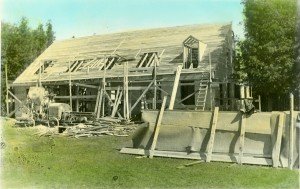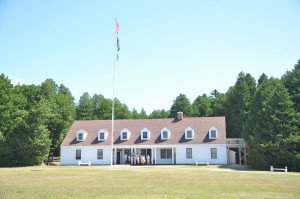On July 25 the newest Michigan Historical Marker will be formally dedicated. It will be the twenty-first marker on the island.

The rear parade ground north of Fort Mackinac is a distinctive Mackinac Island landscape, an integral part of the operation of Fort Mackinac for both military use and, beginning in 1885, as a baseball field. After the closing of the fort in 1895 the Mackinac Island State Park Commission maintained this historic landscape, including the baseball field. The barracks for the Mackinac Island Scout Service Camp was built here in 1934. The new, double-sided marker commemorates both the historic landscape and the Scout Barracks.
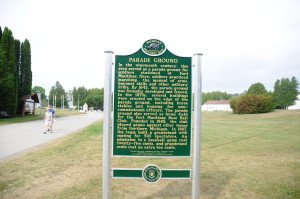
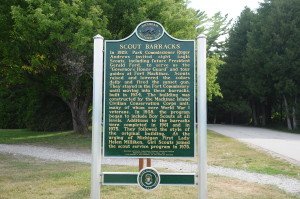
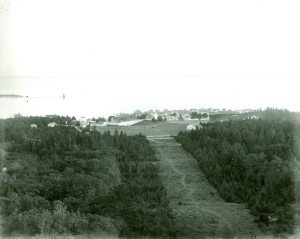
Fort Mackinac Parade Ground
Military activity was never fully confined within the walls of Fort Mackinac. From its establishment in 1780, for example, the army used the area immediately below the fort for a variety of activities. By the 1830s structures were being added outside the fort walls on the bluff, the first being the Officers’ Hill Quarters. The area immediately north of Fort Mackinac was formally developed as a parade ground by at least 1843, when major improvements, including fencing, were completed. Here soldiers practiced marching, bayonet practice, the manual of arms, and other drills to hone their military skills. In the 1870s, several army buildings were constructed on the edge of the field including quarters for non-commissioned officers and stables. In 1885 soldiers formed the Fort Mackinac Base Ball Club and played matches against other teams from throughout northern Michigan on this field. Fort officers supported the team and even allowed the soldiers to build a grandstand capable of seating 500 spectators. Local teams and scouts continued to use the field after the fort closed in 1895. It is believed to be the oldest continuously used baseball field in Michigan.
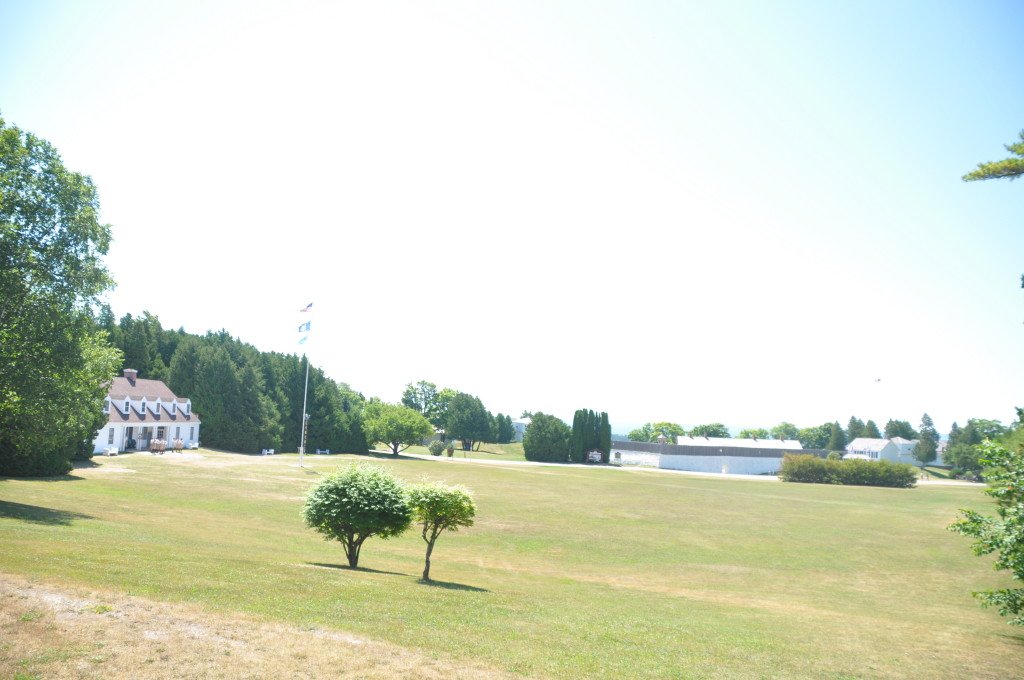
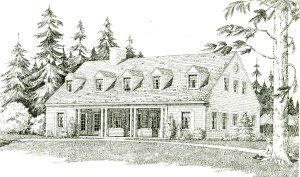
Mackinac Island Scout Barracks
In 1929 Mackinac Island State Park commissioner Roger Andrews organized a contingent of eight Eagle Scouts, including future president Gerald R. Ford, to serve as guides at Fort Mackinac and as the Michigan “Governor’s Honor Guard.” The scouts bunked in the Fort Commissary during the early years. In 1934 a scout barracks building was completed on the east end of the parade ground. The barracks was constructed by the Mackinac Island Civilian Conservation Corps Camp composed of World War I veterans. In 1938 the program was opened to all Boy Scouts, not just those with the rank of Eagle.
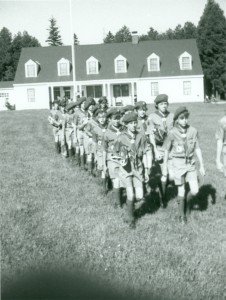
Throughout the 20th century the program continued to grow and the barracks was enlarged in 1961 and again in 1975 to accommodate additional scouts. In 1975, with the support of Michigan’s First Lady Helen Milliken, Girl Scouts were included in the scout service program.
The Michigan Historical Marker program, established in 1955, is administered by the Michigan Historical Commission. The Mackinac Island State Park Commission sponsored the marker. Eleven of the other twenty markers were also sponsored by the Park Commission.
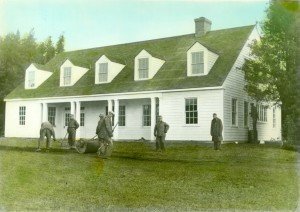
the CCC crew, 1934.
